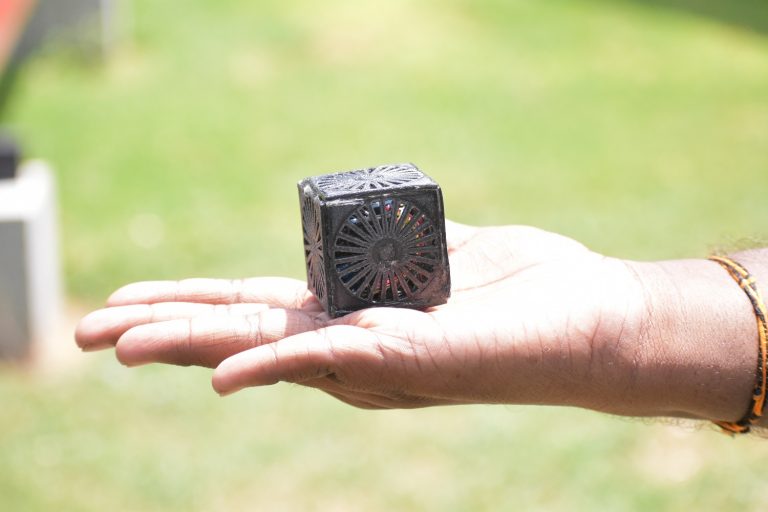Bekannt als Jai Hind 1-S, wurde der Würfel als Vorlage für „Würfel im Weltraum“, ein freier, globaler Wettbewerb für Schüler im Alter von 11-18, entworfen. Dort werden Experimente vorgeschlagen, um in den Weltraum von einer NASA Anlage gestartet zu werden. Mit einem Gewicht von 33,3 Gramm ist der Jai Hind 1-S einer der leichtesten Satelliten der Welt.
Der Jai Hind 1-S Satellit ist so konzipiert, dass er Feuchtigkeit, Druck und Temperaturen misst und volle 24-Stunden im Weltraum erreichen kann. Das Projekt wird es der NASA ermöglichen, neue Ideen für atmosphärische Tests auszuprobieren, und kann sogar zu einer weiteren Nutzung von 3D-gedruckten Weltraumgeräten bei der NASA führen. Es wurde mit Nylon mit einem fabx-3D-Drucker in einer Gesamtdruckzeit von 5-6 Stunden 3D-gedruckt.
Durch die Flexibilität des Designs bietet der 3D-Druck den Herstellern die Möglichkeit, bei der Satellitenproduktion entscheidendes Gewicht und Geld zu sparen. Anfang dieses Jahres startete SSL seinen 3D-gedruckten Satelliten, den Telstar 19 Vantage, um Kommunikationsdienste für Kanada, Südamerika und die Karibik anzubieten.
Indian 3D printer manufacturer 3Ding, and students at the Hindustan Institute of Technology and Sciences, have 3D printed a cube satellite set for launch on a NASA Columbia Scientific Balloon Facility at Fort Sumner, New Mexico. Known as Jai Hind 1-S, The cube was crafted as a submission for Cubes in Space, a free, global competition for students ages 11-18, to design and propose experiments to be launched into space on a NASA sounding rocket and zero-pressure scientific balloon. Weighing in at 33.3 grams, the Jai Hind 1-S is one of the lightest satellites in the world.
The Jai Hind 1-S satellite is designed to measure humidity, pressure and temperatures and is capable of lasting a full 24 hours in space, in comparison to its predecessor, which only lasted 12 minutes. The project will allow for NASA to try out new ideas for atmospheric testing, and may even lead to further use of 3D printed space equipment at NASA. It was 3D printed using nylon with a FabX 3D printer in a total printing time of 5-6 hours.
Due to design flexibility, 3D printing is offering manufacturers bot big and small the opportunity to save crucial weight and money on satellite production. Earlier this year SSL launched its 3D printed satellite, the Telstar 19 VANTAGE to provide communication services for Canada, South America, and the Caribbean.

